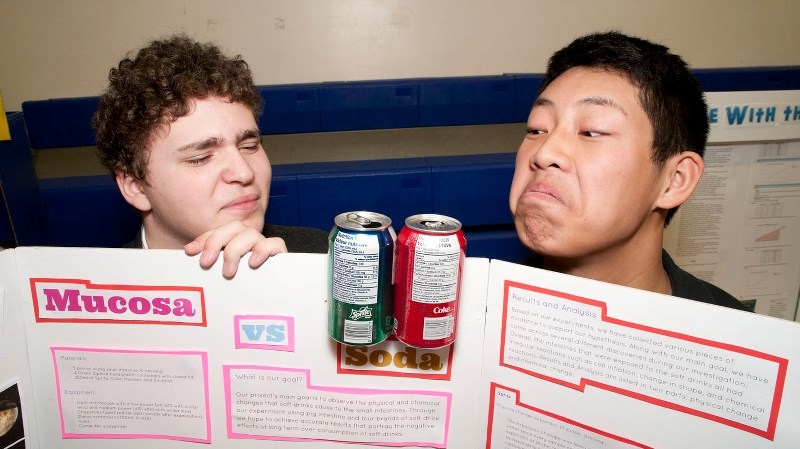A St. Albert student took home some fat cash last weekend for his scientific study of salt in the Sturgeon River.
About 300 Edmonton-area students gathered at the Northern Alberta Institute of Technology last weekend for the Edmonton Regional Science Fair.
This annual event gives students a chance to do scientific experiments and share their ideas with like-minded peers, said science fair president Amanda Joblinski. Top performers qualify for cash prizes and a spot at the Canada-Wide Science Fair later this year.
"The skills (students) acquire from doing a science-fair project are huge," Joblinski said, and include experience with research, teamwork, and the scientific method.
Exhibits this year included studies on insulin, cancer, optical illusions, the contagious nature of smiles, the use of watercress as a pollution-absorber and the precise amount of energy needed to destroy the Earth (about 223 octillion kilojoules, student researcher Vu Nguiyn estimates – equivalent to 53 octillion tonnes of TNT).
Pollution probes
Grade 7 student Calvin Shaw of W.D. Cuts won $150 for his study of salt pollution in the Sturgeon River.
"People salt their sidewalks in the winter and I'm trying to figure out where that (salt) goes," said Shaw, a three-year veteran of the Edmonton science fair.
Shaw said he measured the conductivity of water at eight sites along the Sturgeon in St. Albert from March 13 to 19 to determine salt concentrations. He found that salt levels at outfalls downstream of Big Lake were significantly higher than those measured close to Big Lake, suggesting that the city was having a measurable impact on salt levels in the river.
Salt lowers the melting point of ice, which could explain why the water around the city's outfalls thaws before the rest of the river, Shaw said. As the sudden spike in salt levels caused by the spring thaw could harm plants and insects in the Sturgeon, he recommended that residents use sand on their sidewalks instead.
Ronald Harvey's Alexis Shaw studied the effects of air pollution on white spruce trees. Suspecting that air pollution would inhibit their growth, she sampled needles from five white spruce trees around St. Albert and measured their length.
"The ones near St. Albert Trail and McKenney Ave. were a whole lot shorter than the ones at Ronald Harvey," she said.
Trees near heavy traffic areas had needles that were 44 per cent shorter on average than ones in low traffic areas, Shaw found. While she suspected air pollution from cars was the cause, she wasn't able to rule out poor soil conditions as a culprit.
Increased transit use could improve the health of city trees by reducing air pollution, Shaw said.
Soda scientists Jerry Du and Sean Lis of Bellerose Composite did a test of the effects of soda on the human gut.
Lis said he tends to drink a lot of pop at sleepovers and would often have stomach problems afterwards.
He and Du decided to research the effects of chronic soda pop consumption on the intestines using pig guts as a proxy.
"It was a bit slimy," Lis said of the guts, but not as smelly as they anticipated.
Lis and Du put samples of pig intestine into sealed jars filled with Sprite, Coke, Monster, Rockstar, or water and monitored the results over five days.
Du said the highly acidic Rockstar and Coke caused severe acid burns to the intestine, staining it brown and causing clumps of dead cells to break off.
"It looks like bacon."
They also observed severe swelling in the cells, which, by process of elimination, they blamed on the caffeine in three of the drinks. That swelling would reduce the surface area and absorptive capacity of the intestine, degrading its ability to take in nutrients from food, Du said.
"You have to eat more and you'll get less nutrients from what you eat."
Lis noted that the high sugar content in these drinks could also raise your risk of diabetes.
Du said he and Lis did not determine the amount of soda one would have to drink in a lifetime to suffer these effects, as it would likely vary based on body mass.
Lis said he was going to greatly cut back on his soda intake as a result of this project, and hoped to be back at next year's science fair.




